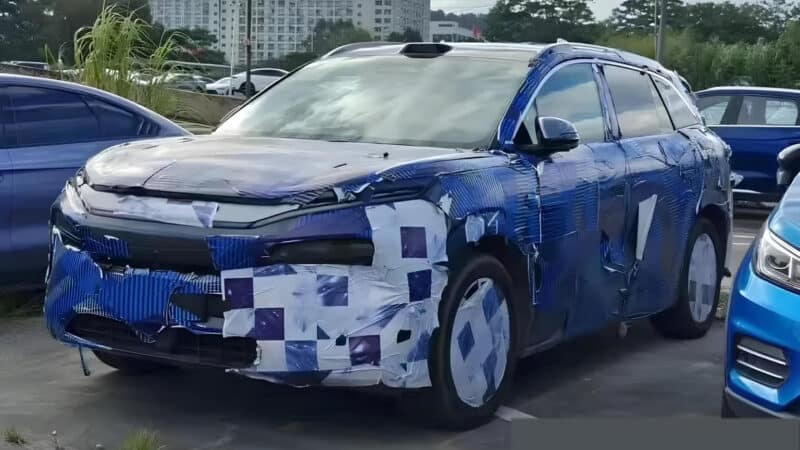The BYD Tang L NEV crossover was spotted in China during road tests. This time it was seen without camouflage in the front end. Its exterior styling starts off the new brand’s design language.
The Tang L is a highly anticipated BYD model. It will become the brand’s flagship SUV available in BEV and PHEV variants. Some Chinese sources mentioned this car can become a replacement for the current BYD Tang (see specs). However, other media outlets have stated that the new car isn’t the Tang successor but a new model in the brand’s lineup.
BYD Tang L exterior styling
The BYD Tang L was previously spotted in China in the early stages of development. Now, the test car seen in China looks closer to the mass-produced variant. And the Tang L surprised us by using the new design language.

The front end of BYD’s upcoming flagship SUV adopts two-storey headlamps. Day running lights sit on the upper level, and low beams and high beams are integrated into the front bumper. Because of the new headlamp design, the Tang L looks similar to Nio cars. However, the BYD’s crossover has the brand’s signature chrome-plated element between running lights called “Dragon’s whiskers.” The Tang L’s front bumper has a trapeze-shaped air intake.

The BYD’s flagship crossover also reminds us of Nio due to a LiDAR sensor on top of the roof. However, LiDAR bumps are widely spread among many automakers. Otherwise, the BYD Tang L looks distinctive. It has a slightly slanted roofline and retractable door handles. From the back, it has the brand’s signature taillight strip with a Chinese knot pattern.

The interior of the BYD Tang L was spotted in August. It adopts six seats with a 2 + 2 + 2 layout. Its center console has a D-shaped steering wheel and a large 15.6-inch floating screen.

There is no information about the Tang L specs and powertrain. We at CarNewsChina expect this SUV to adopt the BYD’s DM 5.0 PHEV system. It consists of a 1.5-liter turbocharged ICE for 115 kW (154 hp) and an e-motor for 200 kW (268 hp). The all-electric variant will likely stand on the e-Platform 3.0 Evo architecture.
Source: WeChat



